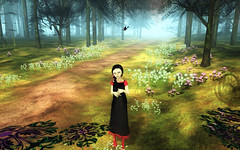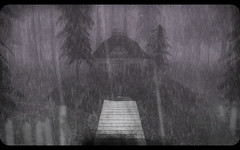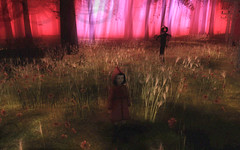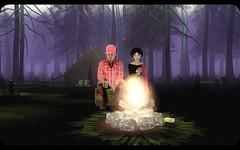When Auriea and I made the choice to create art with game technology, we did so based on our personal experience with video games. That experience had influenced our previous work, but, oddly, it had never entered our mind that we could make a video game ourselves. Possibly because we were not as interested in playing video games as we were in immersing ourselves in the virtual worlds and characters that they presented. But at the time, we were hardly aware of that distinction.
Ever since we started using interactive media for our art, we have wanted to create worlds, environments that surround and embrace, living organisms that respond to the viewer’s presence. We tried very hard to do this on the web, always working on the edge of the technically possible (as a result many of our net art pieces are now broken by the “advances” of technology). But at some point we realized that we were pushing the technology in a direction that it didn’t want to go. So we gave up and turned our attention to game technology, more specifically realtime 3D.
Realtime 3D offered us the possibility to “do for real” what we had always had to fake in the past. To really create a space, to embody the user in that environment, to make a living world that would do things on its own as well as respond to input. We have always been interested in creating things to play with that also play with you, or even play with other things.
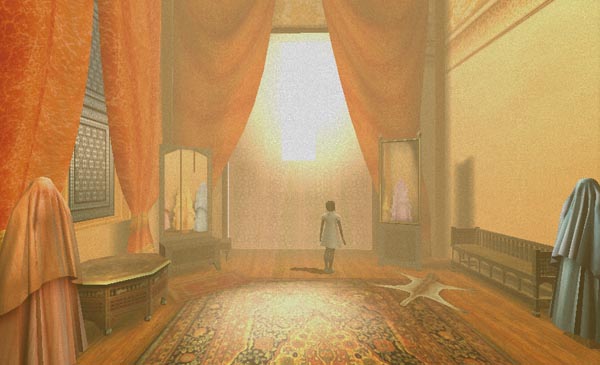
When we were working on our first game project, 8, our interest was in creating a beautiful world that people could walk around in and be in. We added puzzle elements because we thought we needed to give people something to do while they were in the virtual world, or a reason to return to it. In that sense, gameplay was kind of an afterthought. So much so that we even hired an external game designer to “do that dirty job” for us. As designers, we had absolutely no interest in creating a game. Our focus was on the world, and the stories and characters in it. And on making it feel nice to be in this world and to interact with it.
For us, interactivity is not about “making interesting choices” or “overcoming meaningful challenges”. It’s about make-belief. About becoming part of a story, about being embedded in a world, about filling the shoes of somebody else for a while. For us, computer entertainment is not this democratic medium that empowers the viewer to do “anything they choose to do”. Instead, it’s a powerful medium to allow people to experience an unusual emotion, to be something else, to be in another place. For us, interactivity is travel.
And we believe that this is the strength of the medium: it can take us places, places we never imagined could exist, or places so familiar that we almost forgot they did. But the simple idea of being immersed in a living virtual world, despite of its clear appeal, is in fact very problematic for contemporary designers. We’ve all been trained by linear media to think that there must be reasons for things, that there must be a causal chain in whatever we do. I think this is why we all love games so much. On the one hand, video games do allow us to enter these virtual worlds, while, on the other, they don’t abandon us in them: they give us “something to do”. In this respect, the game structure takes the place of the plot structure we are so familiar with in cinema and literature: it creates linearity in an otherwise non-linear medium. The game as safety net.
This makes sense because non-linearity is unfamiliar. It is unheard of in the art and entertainment that we know. Non-linearity, and the unpredictability that comes with it, is frightening, not just to the audience, but also to the authors. For authors, it is difficult to create something of which they don’t know what it will become, how it will behave. Something truly interactive and emergent. So they create games instead and bend the interactive and generative qualities of the medium to their will, so that the author remains in control of the user’s experience at all times. This is the traditional approach to art making.
It’s understandable to want to hang on to it. But I think this is an intermediary phase. I think, in time, we will learn how to create truly non-linear works. Works that embrace the idea that there is not a single center or a single truth. That there is not a single story to tell, or even a multitude of stories. That a new story can happen every time. Such works may not give us the same kind of pleasure that we get from games. But they will give us something new, a new experience, new insights. A new art form worthy of this new technology.



